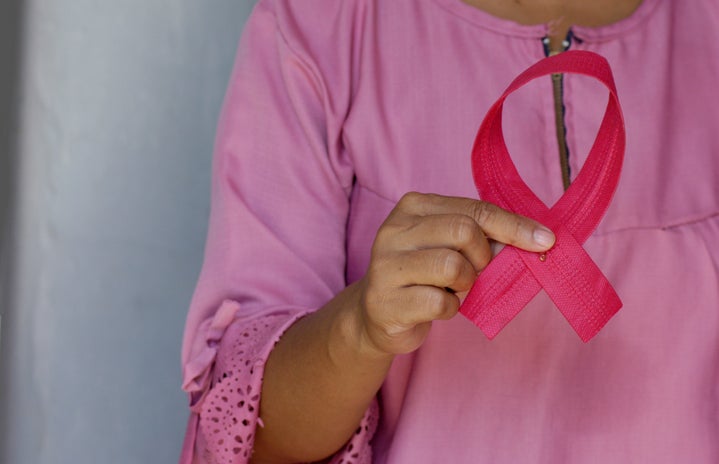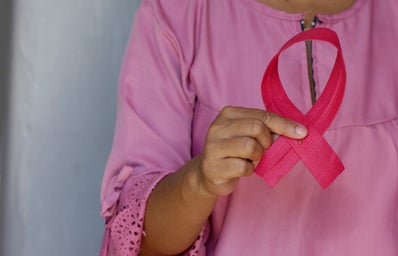October may be Breast Cancer Awareness Month, but it is so important to educate ourselves about women’s health issues all year long. With February being National Cancer Prevention Awareness Month and this week being Women’s Health Week for UW Her Campus, it is the perfect time to learn more about breast cancer and signs to look for.
One in eight women will be diagnosed with breast cancer at some point in her life. It is one of the most common cancers in women with 30% of cancer diagnoses being breast cancer. Breast cancer is categorized into stages 0-4 which depend on the amount the cancer has spread. 63% of diagnoses are at a stage where the cancer has not metastasized, which means spread outside the breast. With this diagnosis, there is a 99% five year survival rate. This is good news for many people, and it makes it all the more important to understand the risk factors and signs of breast cancer.
Genetics are a risk factor that is important to be aware of. Having a family history or having the BRCA1 or BRCA2 gene increases risk of developing breast cancer. Other factors include age, obesity, and early mensturation or delayed menopause. There are also several lifestyle factors associated with an increased risk of breast cancer. These include lack of physical activity, poor diet, and alcohol consumption. While it’s important to know these risk factors, they are not meant to discourage you. In fact, 60-70% of breast cancer patients have no known risk factors. Plenty of people with an increased risk never develop breast cancer too.
With these risks in mind, women should also make sure to give themselves monthly breast exams to look for any physical changes. There are multiple options for doing this. You can do it in the shower, looking in the mirror, or lying down. Use three fingers to press down on the breast and armpit area with light, medium, and firm pressure to feel for any lumps, knots, or changes. You can also do this in the mirror to look for the changes. If you notice any changes from your self exam or are experiencing pain in your breasts, make sure to see a doctor. Most lumps are not cancerous, but it is important to be proactive and cautious if you do find one. In addition, it is recommended for women over 40 to receive a mammogram every 1-2 years. However, if you have an increased risk for breast cancer, talk to your doctor to decide if you should start taking this screening precaution at a younger age.
In the United States, there are over 3.8 million breast cancer survivors. Hopefully, we will find a cure for breast cancer someday. For now, it is vital that women empower each other to learn more about their bodies and take steps to be proactive about a breast cancer diagnosis.


